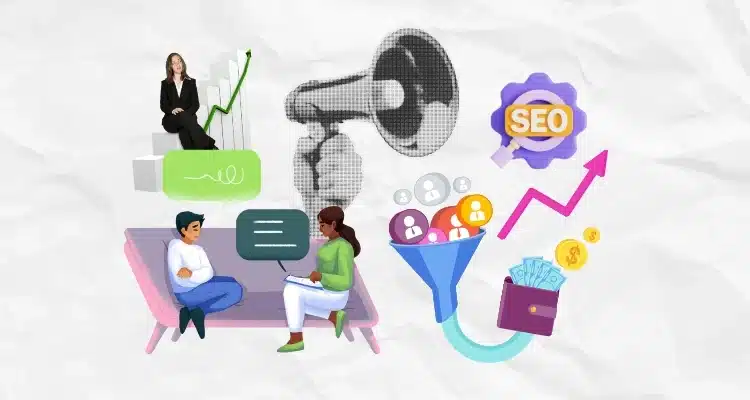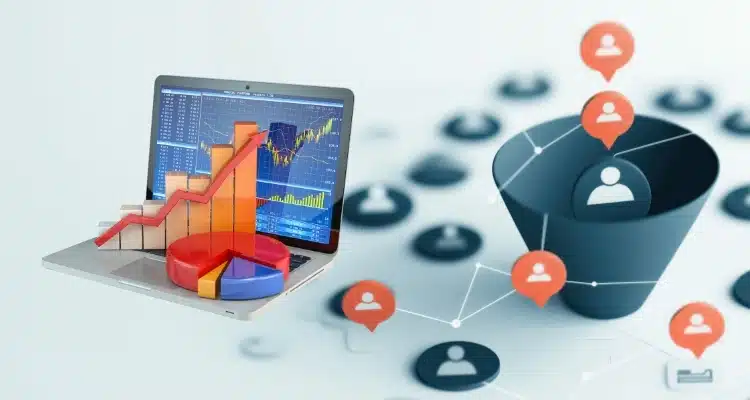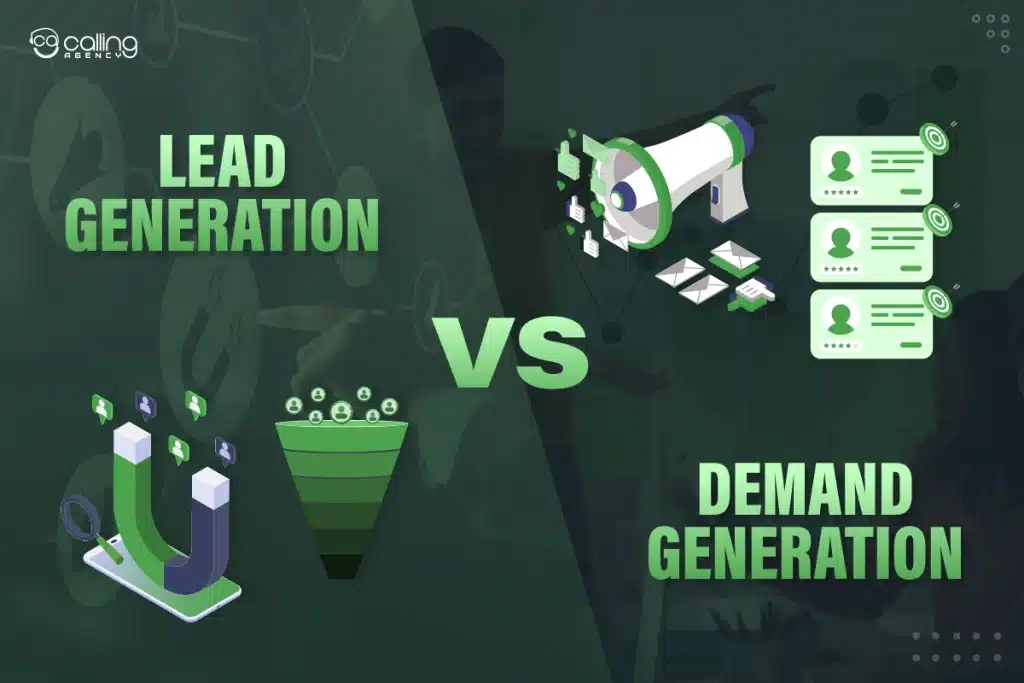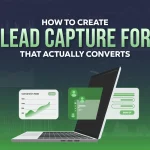In digital marketing, two terms often surface in strategy meetings and campaign briefs. These terms are lead generation and demand generation. They might sound similar and are frequently used in the marketing process, but they serve different purposes within the marketing funnel.
Understanding the difference between the two is very important for building effective marketing strategies that not only attract attention but also convert interest into action. In this blog, we’ll show:
- What each term really means.
- How they complement each other.
- Why the right balance between them necessary for long-term business growth?
What is Demand Generation?
Demand generation is a marketing strategy that creates awareness and interest in a product or service to drive demand and lead to sales. Its goals are identifying consumer needs, educating potential customers, promoting your product and building brand recognition, and nurturing relationships to encourage future purchases.
The demand generation process involves knowing your audience, determining what you want them to do, providing educational content, using multiple strategies and platforms, and offering free trials or demos if necessary. It is about creating a gossip around your product or service and attracting potential customers who are likely to be interested in what you have to offer.
What is Lead Generation?
Lead generation is the process of identifying and attracting potential customers through different channels with the goal of converting them into leads. The individuals who have shown interest in a product or service and provided contact information are called the leads. This process involves using various marketing strategies to capture their interest and guide them through the sales funnel.
The lead generation process involves identifying your potential customers, attracting their interest, gathering their contact information, and moving them through the sales funnel to convert them into paying customers. It works in the mid to bottom position in the sales pipeline to generate sales.
What is Demand Generation vs. Lead Generation?
Demand generation and lead generation are both very important marketing strategies, but they are different from each other in their goals and timing within the sales funnel. Both of them play very important roles in developing the sales pipeline. For the past few years, marketing leaders have stated that generating pipeline is their biggest priority – 55% in 2020 and 53% in 2021.
Demand generation aims to create awareness and interest in a company’s offerings, while lead generation focuses on converting that interest into leads with contact information. Demand generation builds the top of the funnel, and lead generation works in the middle and bottom.
There’s more to knowing the differences between demand generation and lead generation. Let’s look into them now.
What is the Difference Between Lead Generation and Demand Generation? [Comparative Analysis]
As we know that both demand and lead generation are very important marketing strategies; there are a lot of differences in their goals, positions, focuses, strategies, and results. A comparative analysis of the differences between lead generation and demand generation is shown below:
| Features | Demand Generation | Lead Generation |
| Goal | To create broad awareness and interest in a product or service. | To identify and convert potential customers into qualified leads. |
| Position | Top of the sales funnel. | Bottom of the sales funnel. |
| Focus | Building brand reputation, establishing thought leadership, and attracting a wide audience. | Identifying and capturing contact information from individuals who are likely to become customers. |
| Strategy | Uses educational, high-level content like blog posts, webinars, industry events, search engine optimization, and social media to engage a broad audience. | Targeted content, landing pages, email marketing, and calls-to-action (CTAs) to encourage prospects to share their information through forms, downloads, or sign-ups.
|
| Key Metrics | Impressions, engagement, website visits, brand mentions, social media engagement, and marketing qualified leads (MQLs). | Cost per lead, marketing qualified leads (MQLs), and sales qualified leads (SQLs) |
| Result | Generates awareness and interest, but not necessarily contact information for specific individuals. | Generates contact information and qualifies leads for sales follow-up. |
How Do Lead Generation and Demand Generation Work Together?
Demand generation and lead generation are different but complementary marketing strategies that work together to drive business growth.
Demand generation focuses on building awareness and interest in a brand and its offerings, while lead generation focuses on converting those interested prospects into qualified sales leads for business.
Demand generation builds the top of the sales funnel, while lead generation focuses on nurturing and converting leads within the funnel. A successful marketing strategy includes both maximizing the number of qualified leads and increasing sales. Here’s how lead generation and demand generation work together:
What Demand Generation Does?
The functions of demand generation are:

- As a top-of-the-funnel activity, it builds the foundation for sales conversion through creating content and a marketing campaign.
- These attract a large audience and generate awareness about a product or service.
- If the product or service is good, the potential customers are more attracted, and the demand for your brand increases in the market.
Examples include content marketing blog posts, ebooks, webinars, social media marketing, and search engine optimization (SEO).
What Lead Generation Does?
Here’s how lead generation works after demand generation:

- Once demand generation has created interest in your target audience, lead generation captures that interest by encouraging potential customers to provide their contact information, usually through a web form.
- It potentially converts the leads into paying customers by guiding them through the sales pipeline.
- This could be done through landing pages, email marketing, and calls-to-action (CTAs) with offers like free trials, ebooks, or webinars. It is believed that only 10%-15% of all leads convert into paying customers.
Examples include content marketing, SEO, social media marketing, email marketing, landing pages, etc.
Nurturing Leads
After capturing leads, lead generation continues by nurturing them with targeted content and communications to guide them through the sales process. This may involve email marketing campaigns, personalized content, personalized CTAs, and ongoing engagement to eventually convert the leads into paying customers. Personalized CTAs convert 202% better than basic ones.
What Should Be Your Marketing Priority? Lead Generation or Demand Generation?
Demand generation requires time, patience, and commitment to educating and involving your potential customers. It may not give you results in the short term, but it addresses the majority of the market and can give you desired results over time. This process is ideal for companies that focus on solid long-term growth and want to establish a trustworthy relationship with their audience.
On the other hand, lead generation is faster and more immediate. As it is on the bottom of the funnel, it involves activities like creating targeted landing pages, running paid advertising campaigns, and optimizing for search engines (SEO) to attract leads. This process moves potential customers through the sales funnel and ultimately converts them into paying customers.
The most effective marketing strategy involves understanding your business goals and adjusting your approach to meet those needs. Involving a combination of both lead and demand generation is usually the smarter idea.
However, the process you are choosing depends on your business goals and strategies. If your business needs a quick boost in sales or has a product launch, lead generation should be prioritized. But if you’re aiming to build a strong brand, increase market share, and establish a loyal customer base, demand generation should be a key focus.
A successful marketing strategy often integrates both, with demand generation creating a strong foundation for lead generation efforts. For example, a company might use demand generation to build awareness of a new product through social media and content marketing, then use lead generation tactics like targeted ads to attract users who are actively interested in purchasing.
Conclusion
While lead generation and demand generation are closely linked, they play different roles in a successful marketing strategy. Demand generation focuses on building awareness and interest in your brand or product, laying the foundation for long-term growth. On the other hand, lead generation is about capturing that interest and turning it into actionable prospects.
If these two approaches are used together strategically, it can benefit both the top and bottom of your funnel by driving traffic, building trust, and increasing conversions. By understanding the unique value of each, marketers can create more targeted and effective campaigns that support their business goals.
Want to learn more about important strategies in marketing? Stay connected with us so you never miss an update!





